
Roots
Feel the quiet murmur of generations, a wisdom carried not on wind, but in the coiled helix of each strand, in the very spring and resilience of textured hair. Our exploration begins not with modern formulations or fleeting trends, but with an invitation to remember, to step back into the embrace of ancestral knowledge. This is a journey to the deep currents of textured hair heritage, seeking how early practices, born of necessity and profound understanding, enhanced the very manipulation of hair in ways that still speak to us today.
Before the microscope revealed the intricate architecture of a kinky coil or a wavy cascade, our foremothers and forefathers possessed an innate, lived science of hair. Their hands, guided by generations of observation and intuition, understood the unique demands of textured hair—its delicate nature, its thirst for moisture, its tendency to resist, then yield, to patient handling. This was a knowledge passed down through touch, through communal rituals, and through the development of tools that seemed almost to grow from the earth itself, perfectly suited for the task at hand. This understanding, though unwritten in scientific journals of their time, was a profound mastery of manipulation, directly contributing to the vitality and beauty of hair across varied ancestral landscapes.
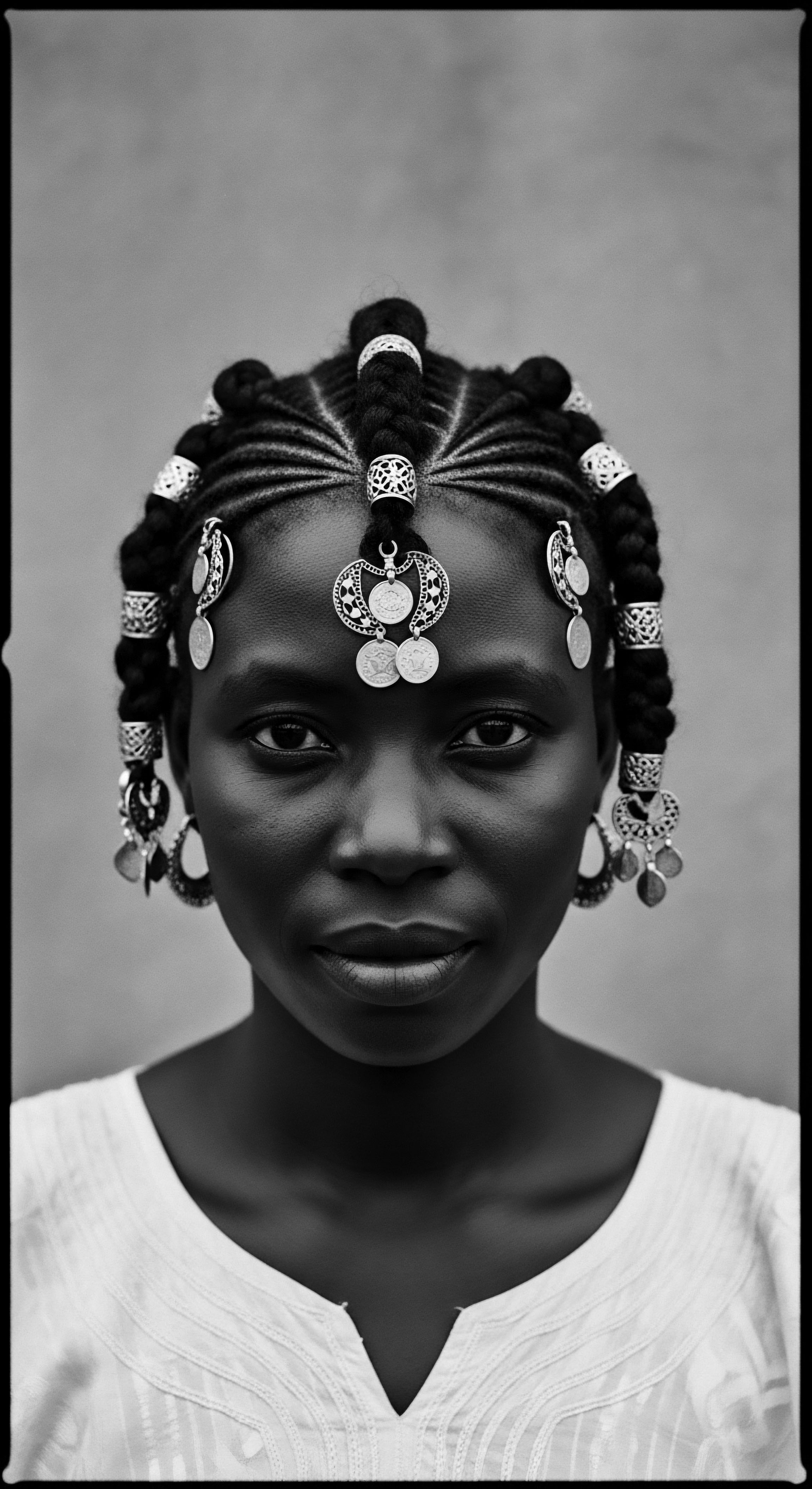
Hair Anatomy and the Wisdom of Touch
The inherent structure of textured hair, with its elliptical cross-section and numerous twists and turns, naturally makes it prone to tangling and dryness. Ancestral communities did not dissect hair follicles, yet their practices recognized these fundamental characteristics. They discerned that rough handling led to breakage, and that dry strands clung to one another with an unforgiving grip. This deep appreciation for hair’s delicate strength shaped their manipulative techniques.
They knew, for instance, the subtle resistance of a knot and how to coax it open rather than force it through. This was an intimate, tactile understanding of hair’s fragility and its need for gentle, deliberate care, which guided every interaction. The methods employed were often slow, rhythmic, and intentional, mirroring the patience demanded by the hair itself.
Consider the very act of detangling, a cornerstone of textured hair manipulation. Contemporary practices often emphasize a wet detangle, but ancestral wisdom frequently leaned on methods that plasticized or softened the hair even when dry, using natural emollients before combs were introduced. This approach reduced friction and breakage, allowing for smoother manipulation.
These techniques were born from an acute awareness of hair’s behavior across diverse environments, from the arid Sahel to humid coastal regions. Their efficacy demonstrates a deep, intuitive grasp of hair hydrodynamics and structural integrity, long before these terms entered scientific discourse.

Ancestral Tools and Their Purpose
The Afro comb, an instrument of ancient design, served as both a practical implement for detangling and styling, and a powerful symbol of status and cultural identity.
Among the most enduring symbols of textured hair heritage is the Afro comb. Archaeological findings reveal its presence in ancient civilizations such as Kush and Kemet (present-day Sudan, South Sudan, and Egypt) dating back as far as 7,000 years ago. These early combs, often crafted from wood, bone, or ivory, featured widely spaced, long teeth, a design inherently suited to glide through dense, coily hair without causing undue tension or breakage. The long teeth enabled reach to the scalp, stretching hair for styling.
These were certainly not merely grooming tools; they were often adorned with symbolic carvings, signaling tribal identity, social standing, or even spiritual connections. A detailed study of combs from Kemet indicates that the spacing between teeth in African combs was wider than their European counterparts, reflecting an acute awareness of the specific needs of African hair, which is generally more delicate and prone to breakage. The ingenuity lay in this purposeful design, directly enhancing the ease and effectiveness of hair manipulation for generations.
Beyond combs, ancestral communities utilized a range of tools, some as simple as their own fingers, which remain unparalleled in their sensitivity for detecting tangles and minimizing damage. Other tools might have included smoothed gourds for cleansing or applying mixtures, and even specific types of leaves or bark that served as brushes or applicators for concoctions. Each tool was a deliberate extension of the hand, designed to work in harmony with the hair’s natural inclinations, rather than against them. The careful selection and crafting of these implements speaks to a deep respect for hair as a living extension of self and community.
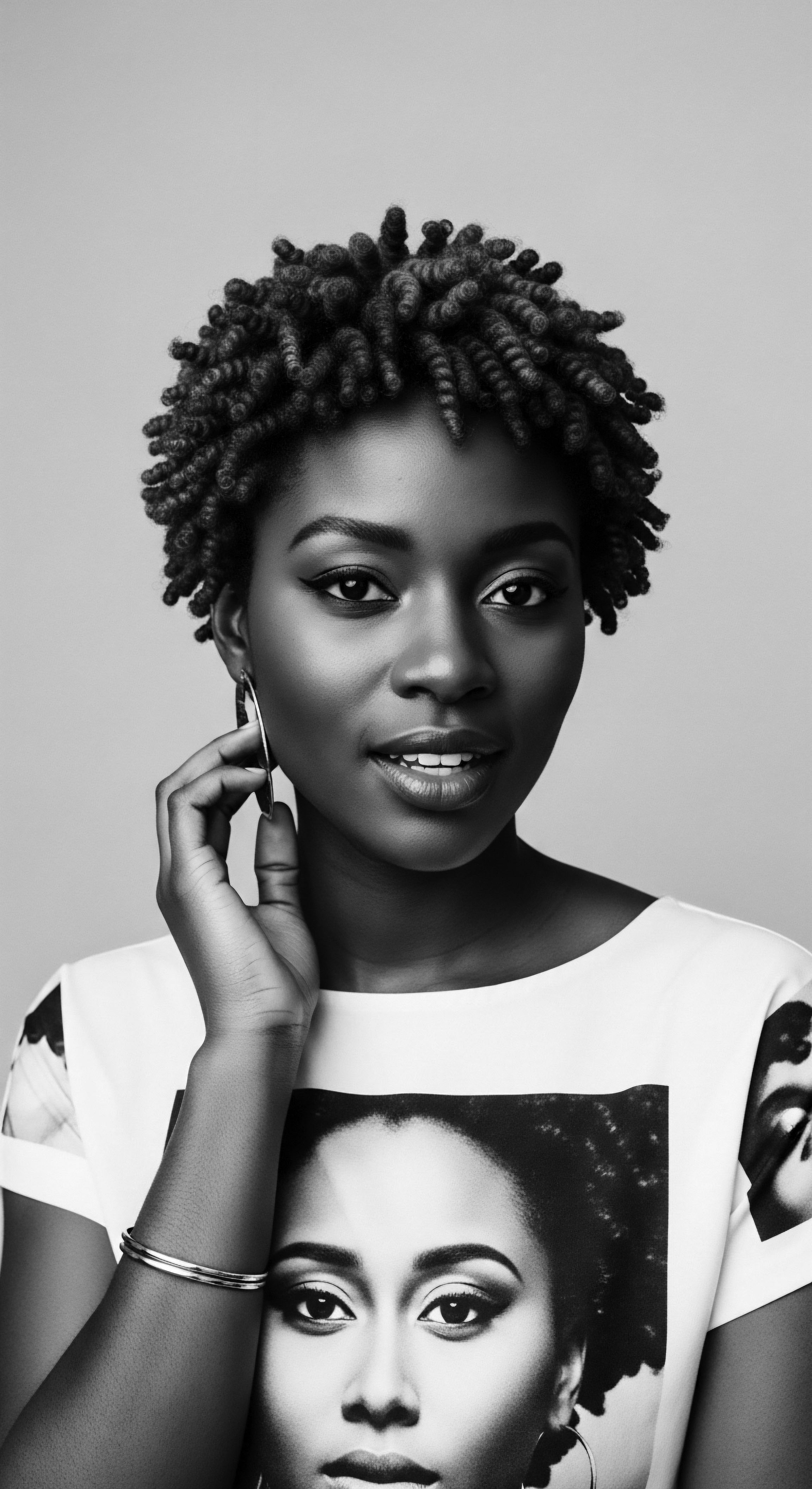
Hair’s Place in a Community’s Lexicon
The language surrounding textured hair in ancestral societies went beyond simple description; it was a vocabulary rich with cultural context and societal meaning. Hair was not just a collection of strands; it was a canvas for communication, a marker of identity, and a repository of history. Hairstyles conveyed age, marital status, clan affiliation, and even a person’s readiness for specific rites of passage.
While modern classification systems often rely on curl patterns, ancestral understanding was likely more fluid, recognizing a spectrum of textures and adapting practices to suit each individual’s unique crown. The communal practice of hair care, often involving multiple generations, ensured this nuanced understanding was passed down, developing a shared lexicon of touch, technique, and traditional knowledge.
This collective wisdom fostered a profound connection to hair. The terms used, though not formally documented as “classification systems” in a modern sense, described hair’s condition, its health, and its readiness for certain manipulations. The very act of naming a style or a hair state would have reinforced its cultural importance and the specific care it required. This deep integration of hair into cultural identity meant that hair manipulation was never a solitary, superficial act, but a deeply meaningful one, linked to individual and collective heritage.
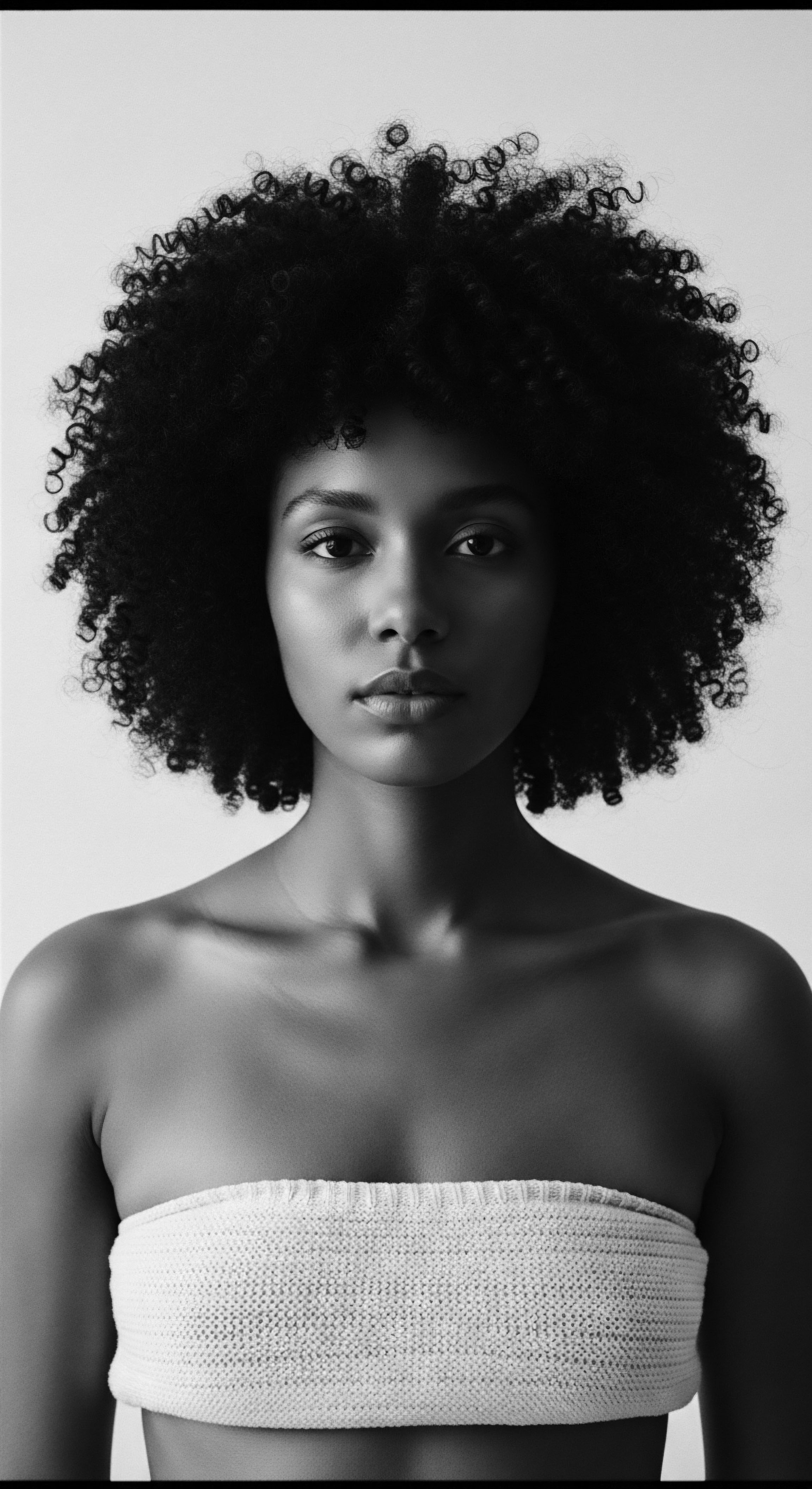
Ritual
The transition from understanding the inherent nature of textured hair to its practical manipulation was always steeped in ritual. These were not mere routines but sacred acts, often communal, reinforcing social bonds and transmitting ancestral wisdom across generations. The art and science of styling, from intricate braids to protective wraps, were refined over millennia, each technique serving a dual purpose ❉ aesthetic expression and the preservation of hair health. The careful application of natural ingredients, the rhythmic movements of fingers and combs, and the purposeful shaping of coils and kinks formed a living archive of care, directly enhancing the manageability and vitality of textured hair.

Protective Styles and Their Ancient Roots
For textured hair, protective styling stands as a cornerstone of ancestral manipulation techniques. Braids, twists, and various forms of coiling were not just decorative; they shielded delicate strands from environmental elements—sun, dust, and friction—while promoting length retention. These styles, seen across the African continent and diaspora, encapsulated sophisticated understanding of hair mechanics. The meticulous sectioning, the even tension applied, and the secure fastening of these styles prevented tangling, breakage, and excessive manipulation of individual strands.
Historical records and ethnographic studies reveal a vast encyclopedia of such styles, each with its own history and communal significance, demonstrating a deep appreciation for the hair’s integrity. Braids could even serve as maps for escape during periods of enslavement, imbuing these protective styles with a powerful historical layer.
The evolution of these styles, from ancient Egyptian braided wigs to the intricate patterns of West African cornrows, reflects continuous refinement. The goal was to minimize daily handling, allowing hair to rest and retain moisture. This foresight in hair care, born of ancestral ingenuity, directly enhanced hair manipulation by reducing the frequency of aggressive detangling or styling, fostering healthier, stronger hair over time.

Natural Styling and Preserving Definition
Beyond elaborate protective styles, ancestral practices also celebrated the natural definition of textured hair. This involved techniques that enhanced coil formation and reduced frizz without resorting to harsh chemicals or excessive heat. Central to this was the judicious use of emollients and humectants sourced directly from nature. The application of plant-based oils and butters, often warmed, allowed for gentle finger-coiling or stretching that preserved the hair’s inherent spring.
This approach allowed the hair to be manipulated into its most defined state, celebrating its innate beauty rather than attempting to alter its fundamental structure. The goal was always to work with the hair, not against it, a testament to true manipulative mastery.

The Potent Power of Plant Offerings
Shea butter, revered across West Africa as ‘women’s gold,’ stands as a timeless example of how ancestral ingredients provided profound nourishment and malleability to textured hair.
Among the most celebrated ancestral ingredients, Shea Butter (Vitellaria paradoxa) holds a place of honor. For centuries, women across West Africa have extracted this rich, ivory-hued fat from the nuts of the shea tree, employing it not only for skin care and cooking but as a fundamental component of hair treatment. Its dense composition of fatty acids and vitamins A and E provides exceptional moisturizing and softening properties, making textured hair more pliable and less prone to breakage during manipulation.
Applied as a pomade, it helped hold hairstyles and gently relaxed curls, directly aiding in styling and detangling. The deep historical roots of its use, from ancient caravans carrying it in clay pots to its role in daily essentials and ceremonial rituals, underscore its enduring value.
Beyond shea butter, a myriad of other plants served as crucial aids in hair manipulation. In Chad, the Chebe Ritual, a specific historical example, involves a paste made from cherry seeds, cloves, and most notably, the seeds of the Chebe tree (Croton gratissimus). This paste, applied to braided hair, is said to make hair grow longer and more lustrous. While the process is time-consuming, requiring hours for application, it represents a deep, ancestral commitment to hair health and length retention, highlighting how dedicated, prolonged manipulation with specific natural mixtures yielded desired outcomes.
Other traditional botanical allies included various oils like Castor Oil, used in ancient Egypt for conditioning and strengthening, and Henna (Lawsonia inermis), utilized for both coloring and strengthening hair in regions spanning the Middle East, South Asia, and North Africa. Ethnobotanical studies from places like Ethiopia highlight plants such as Ziziphus Spina-Christi and Sesamum Orientale, whose leaves were prepared as topical treatments or leave-in conditioners, demonstrating their direct role in enhancing hair manageability and health. The traditional method of preparation, often involving crushing, macerating, or decocting, ensured the extraction of beneficial compounds that provided slip, moisture, and strength, all crucial for effective manipulation.
- Shea Butter ❉ A rich emollient, traditionally extracted in West Africa, providing deep moisture and slip, making detangling and styling easier.
- Chebe Seeds ❉ Central to the Chadian ritual, used in a paste to promote length retention and reduce breakage, thereby enhancing long-term manipulation.
- Castor Oil ❉ A thick, nourishing oil utilized in ancient Egypt for strengthening and conditioning hair.
- Henna ❉ A natural dye from leaves, valued for its strengthening and conditioning properties across various ancient cultures.
- Ziziphus Spina-Christi ❉ Plant species identified in ethnobotanical studies as traditional hair treatments or leave-in conditioners.

Understanding Thermal Methods
Unlike modern reliance on high-heat tools, ancestral methods of manipulating textured hair generally minimized extreme thermal exposure. While some practices might have involved gentle warming of oils to aid penetration or the use of mild heat from fires for drying (often at a distance), direct, high-temperature heat styling was not a prevalent feature. This avoidance was not a lack of technology but a recognition of hair’s vulnerability.
Ancestral practices instinctively understood that excessive heat could compromise the hair’s structural integrity, leading to irreversible damage that hinders future manipulation. The focus remained on moisture retention and gentle techniques, preserving the natural curl pattern and overall health.
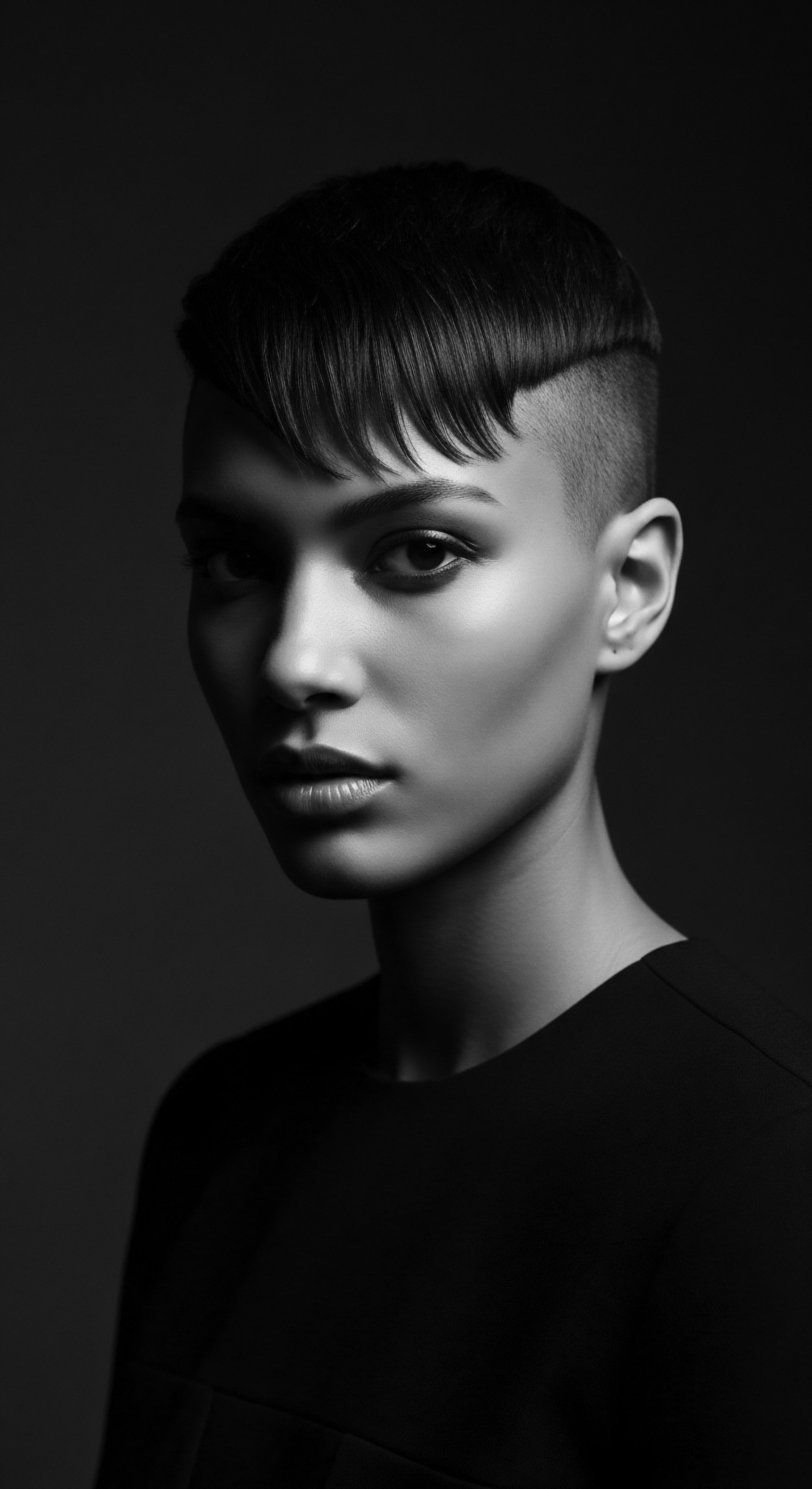
What are the Ancestral Methods for Gentle Detangling?
The process of detangling textured hair, often seen as a challenge today, was approached by ancestors with profound patience and specific techniques. They understood that dry, matted hair would inevitably break. Thus, conditioning agents from the earth were paramount. Before combs, fingers were the primary tools, working slowly from ends to roots, feeling each knot, and gently separating strands.
The concept of “plasticizing” hair—softening it with water and a natural detangler or oil—was an unwritten rule, preventing unnecessary tension. This systematic approach, often performed in sections, whether large or small, allowed for thorough but damage-free manipulation. The wide-tooth combs, a direct ancestor to modern detangling tools, would only be introduced after this initial finger work, further reducing stress on the hair. This multi-step, gentle process was a masterclass in enhancing hair manipulation by minimizing breakage and preserving length.
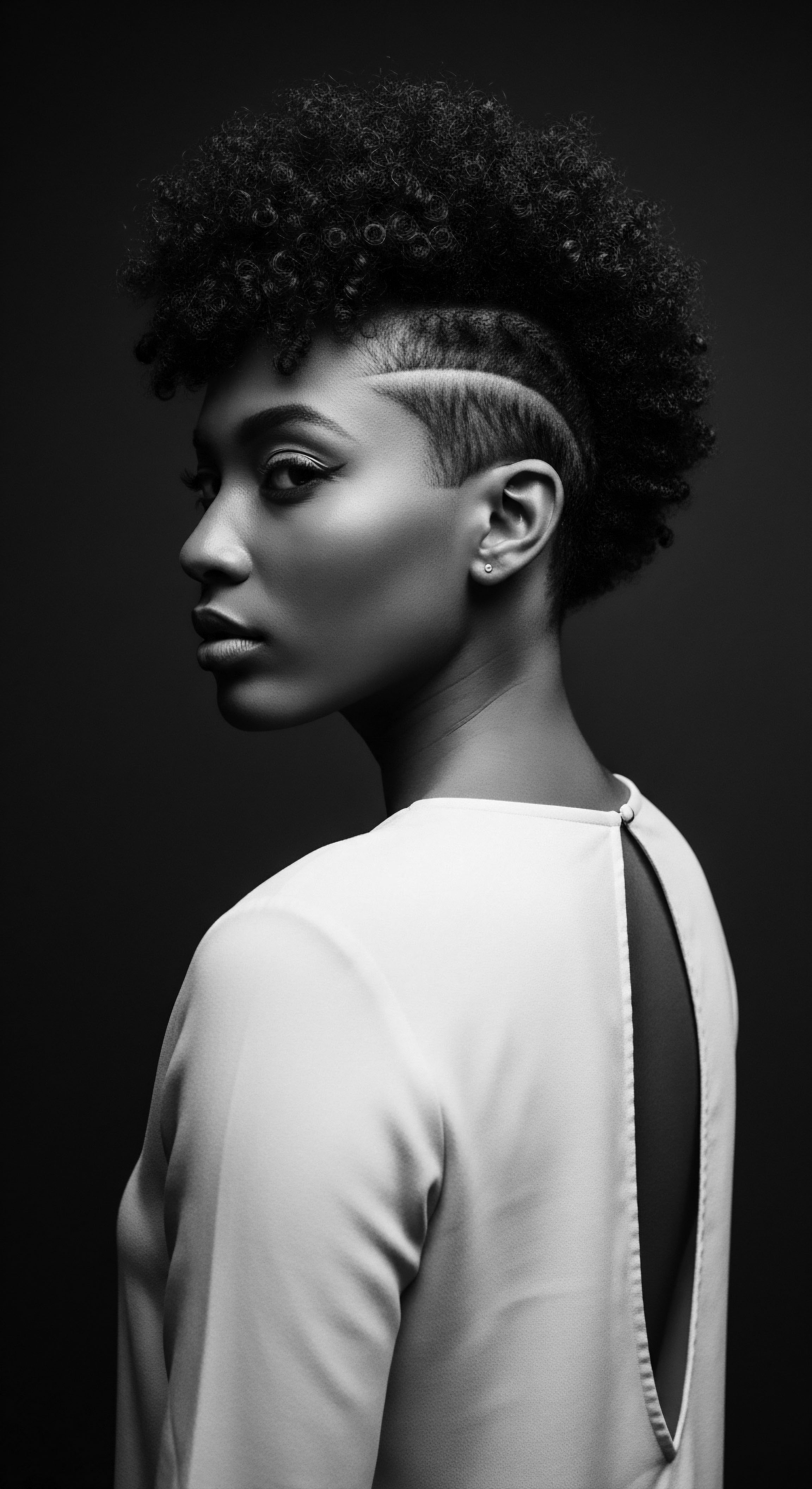
Relay
The echo of ancestral practices resonates powerfully in our contemporary understanding of textured hair manipulation, forming a continuous relay of wisdom from past to present. It is through this lens of enduring heritage that we gain the deepest appreciation for how these age-old approaches not only enhanced but truly perfected the interaction with textured strands. This goes beyond mere technique; it delves into the interplay of elemental biology, deeply rooted cultural contexts, and the validation often provided by modern scientific inquiry. Our forebears intuitively understood principles that cutting-edge research now confirms, demonstrating a timeless connection between the soul of a strand and its care.

Building Personalized Regimens with Ancestral Wisdom
Ancestral hair care was never a one-size-fits-all endeavor. Communities developed nuanced regimens tailored to individual hair textures, environmental conditions, and available local resources. This adaptability is perhaps the most salient lesson for building contemporary personalized regimens. While modern science offers detailed analyses of porosity, elasticity, and specific ingredient benefits, ancestral wisdom achieved similar results through keen observation and iterative practice.
They knew which plants thrived in their region, which oils offered the best protection against their climate’s dryness or humidity, and which rituals yielded the most beneficial outcomes for their specific hair types. For instance, the consistent use of shea butter across the Sahel region directly responded to the need for intense moisturization in arid conditions. This profound understanding of personalized care, rooted in environmental harmony and individual needs, enhanced manipulation by providing hair with precisely what it required to be supple and responsive.
The systematic, though informal, approach to problem-solving within these ancestral communities allowed for a continuous refinement of manipulation techniques. When hair was dry, a different blend of oils might be used. If it was prone to tangles, more emphasis might be placed on pre-detangling with conditioning agents. This empirical method, passed down through oral tradition and demonstration, created a living science of hair care that adapted and specialized over time, ensuring effective manipulation for diverse hair states.

How Did Ancestral Nighttime Rituals Protect Textured Hair?
The practice of protecting hair during periods of rest is not a modern innovation but a deeply embedded ancestral wisdom. While the modern silk bonnet may feel contemporary, its conceptual lineage stretches back to various forms of head coverings, wraps, and sleeping mats used by different African communities. These coverings, often made from natural fibers, served to minimize friction against coarse sleeping surfaces, thereby reducing tangles, breakage, and moisture loss. The knowledge that undisturbed, protected hair retained its styling and health, reducing the need for aggressive manipulation upon waking, was an unspoken understanding.
This simple yet profound practice allowed the hair to maintain its integrity, ensuring that the labor of the day’s styling or care endured, setting the stage for easier, gentler manipulation in the days that followed. It underscores a holistic approach to hair care, acknowledging its vulnerability even during rest, and proactively safeguarding its well-being. This preventative care directly enhanced the daily ease of textured hair manipulation by preserving its condition.
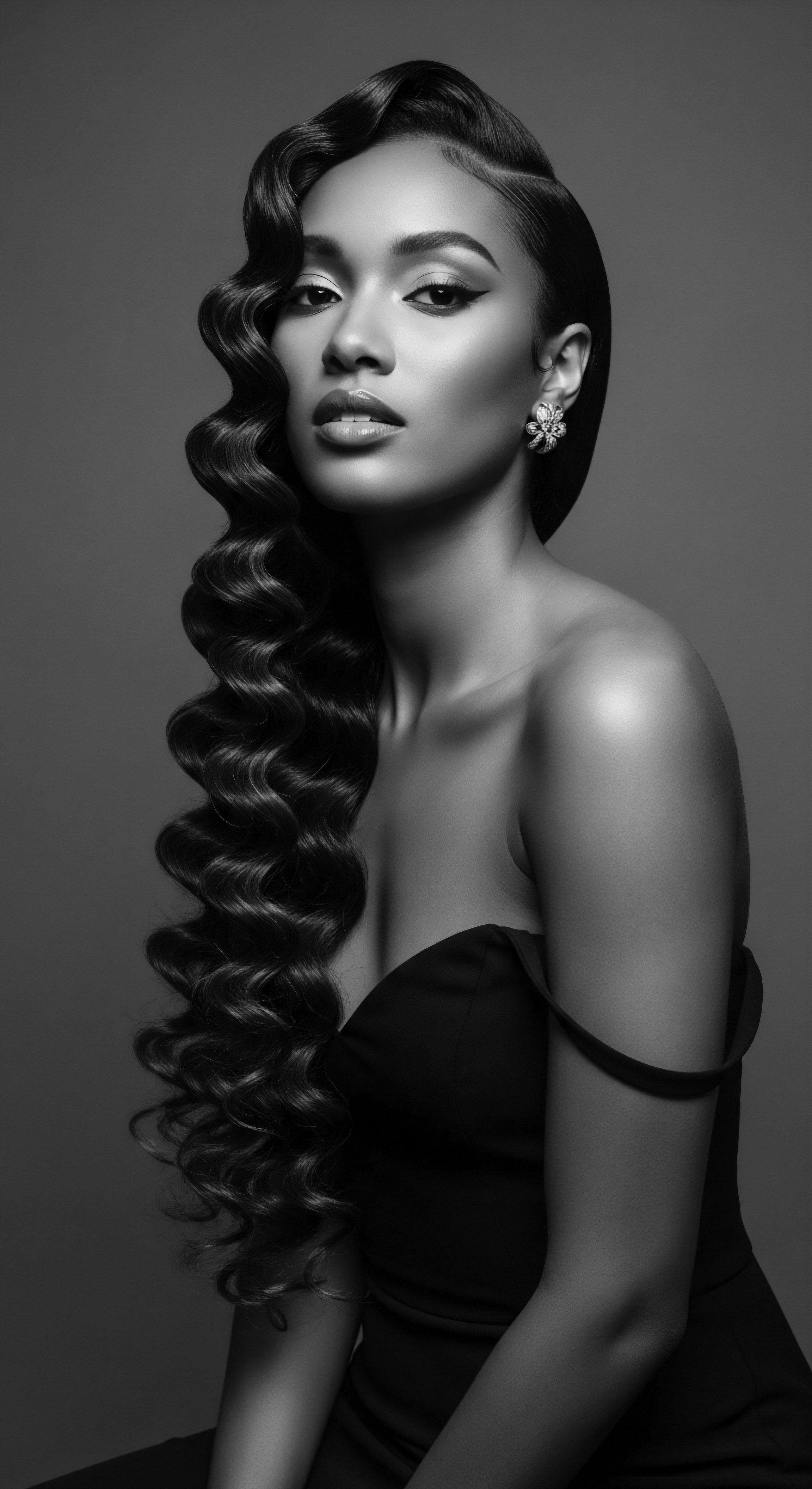
Ingredient Insights and Their Echoes in Science
The efficacy of ancestral practices in enhancing textured hair manipulation is increasingly supported by modern scientific understanding, revealing a compelling synergy between ancient wisdom and contemporary research. Many traditionally used plant-based ingredients possessed properties that directly addressed the unique characteristics of textured hair.
| Traditional Ingredient Shea Butter (Vitellaria paradoxa) |
| Ancestral Application Applied as a moisturizer, detangler, and styling pomade to soften hair, provide slip, and hold styles. |
| Scientific Connection to Manipulation Enhancement Rich in fatty acids (oleic, stearic, linoleic), triterpenes, and vitamins A and E. These compounds provide emollience, reduce water loss, and create a protective barrier, making hair more pliable and reducing friction during detangling. Its unsaponifiable nature prevents stripping natural oils. |
| Traditional Ingredient Chebe Powder (from Croton gratissimus) |
| Ancestral Application Mixed into a paste and applied to hair to coat strands, reducing breakage and promoting length retention. |
| Scientific Connection to Manipulation Enhancement Though research is still emerging, the protective coating provided by Chebe, combined with minimal manipulation, physically reduces friction between strands, preventing breakage and allowing hair to retain length. Its components may also possess anti-inflammatory or conditioning properties for the scalp. |
| Traditional Ingredient Castor Oil (Ricinus communis) |
| Ancestral Application Used as a conditioner, strengthener, and for promoting growth in ancient Egypt. |
| Scientific Connection to Manipulation Enhancement High in ricinoleic acid, a unique fatty acid that contributes to its viscosity and moisturizing properties. Its thick consistency can coat hair strands, providing lubrication for detangling and reducing split ends, while potentially promoting a healthy scalp environment for growth. |
| Traditional Ingredient Ziziphus spina-christi |
| Ancestral Application Leaves crushed and mixed with water as a shampoo or leave-in conditioner for cleansing and softening. |
| Scientific Connection to Manipulation Enhancement This plant contains saponins, natural cleansing agents that gently remove impurities without stripping hair, preserving moisture, and making it easier to manage. It also offers conditioning benefits, enhancing the hair's ability to be manipulated. |
| Traditional Ingredient These examples demonstrate how ancestral knowledge, though empirical, aligned with the biophysical needs of textured hair, setting the stage for effective manipulation and longevity. |
The traditional practices of mixing and macerating plant materials ensured the bioavailability of beneficial compounds, allowing them to effectively coat, penetrate, and protect the hair shaft. This process directly contributed to reduced friction, enhanced elasticity, and overall hair resilience, all factors that critically enhanced the ease and efficacy of hair manipulation. Ancestors, without laboratories, devised sophisticated systems of care that modern science now helps us appreciate more fully.

Ancestral Problem-Solving for Textured Hair
Challenges like dryness, breakage, and scalp irritation were addressed by ancestral communities through an adaptive, resource-based approach. The dryness inherent in textured hair was met with a consistent layering of rich oils and butters, often applied in stages to seal in moisture. Breakage, understood as a sign of fragility, was combatted by gentler detangling techniques, protective styling, and strengthening concoctions from local flora. Scalp health, fundamental to hair growth, was supported by anti-inflammatory and antiseptic plant extracts, ensuring a clean and nourished environment.
The collective experience of the community served as a vast compendium of remedies and techniques, each refined over generations, providing effective solutions that enhanced the hair’s ability to be manipulated without damage. This communal problem-solving fostered robust, thriving hair, not just for aesthetic purposes, but as a symbol of health and cultural continuity.

Reflection
To truly grasp how ancestral practices enhanced textured hair manipulation is to peer into the very ‘Soul of a Strand’—to witness a living archive of wisdom, resilience, and profound beauty. The journey through these historical approaches reveals far more than just techniques and ingredients; it uncovers a deep, abiding respect for the natural world and an understanding of hair as an extension of identity, spirit, and community. From the wide-toothed comb crafted for coiled patterns to the potent plant-based emollients, each practice was a testament to inventive intelligence, born of necessity and passed down with reverence.
This heritage, spanning millennia, reminds us that the quest for healthy, manageable textured hair is not a new one, but a timeless pursuit, deeply woven into the fabric of Black and mixed-race experiences. It urges us to honor these legacies, recognizing that the ingenuity of our ancestors provides not just historical footnotes, but enduring foundations for textured hair care today and for all tomorrows.
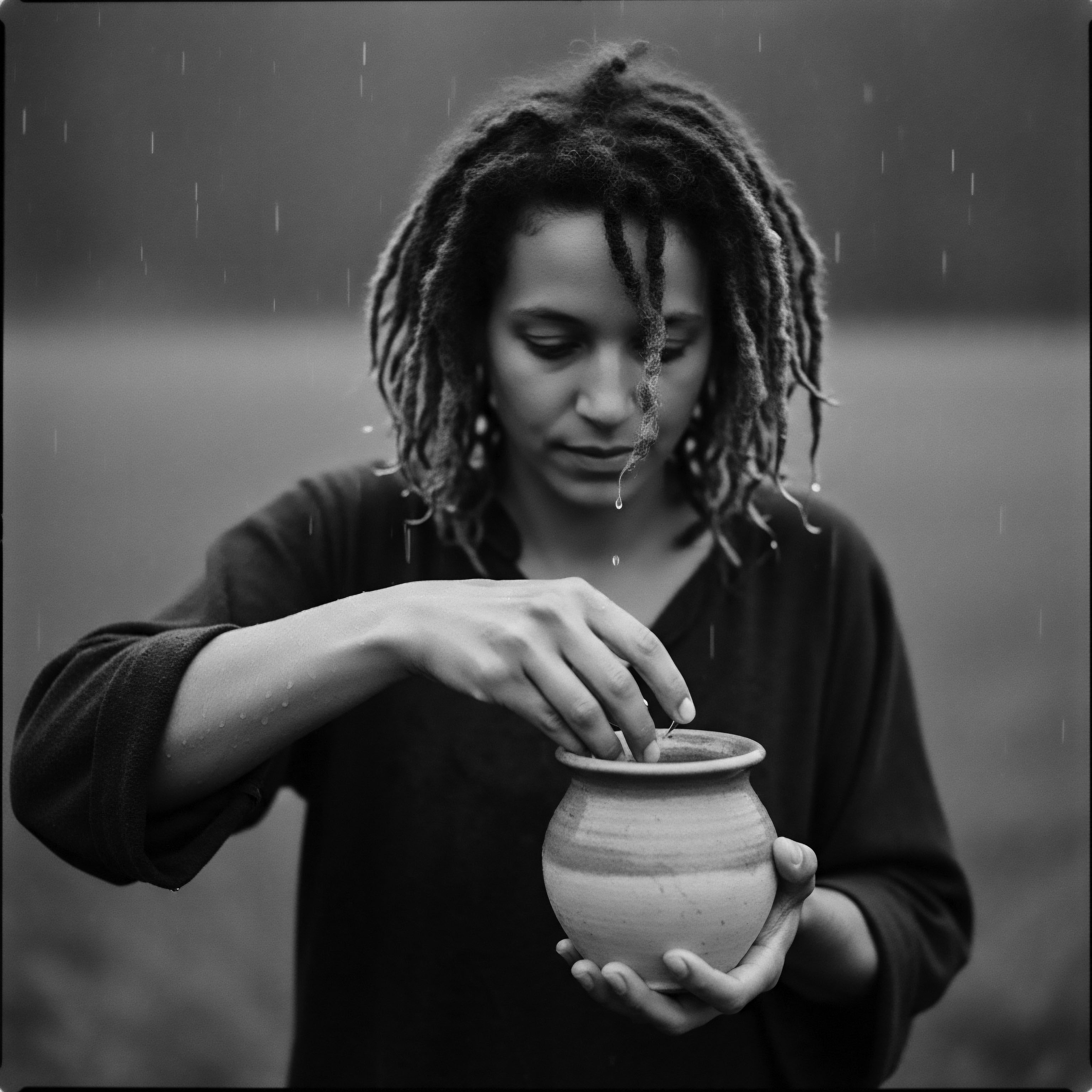
References
- Gallagher, E. et al. The Archaeology of Shea Butter. 2023.
- Kerharo, J. & Adam, J. G. La Pharmacopée Sénégalaise Traditionnelle. Plantes Médicinales et Toxiques. Vigot Frères, 1974.
- Diop, A. B. La Famille Wolof ❉ Tradition et Changement. Présence Africaine, 1985.
- Hampton, L. Shea Butter ❉ An Ancient Ingredient for Modern Times. Journal of African American History, 2011.
- Tella, A. The Use of Shea Butter (Butyrospermum parkii) in Traditional Medicine. West African Journal of Pharmacology and Drug Research, 1979.
- Falconi, C. The Secret Ingredient ❉ Shea Butter. International Journal of Cosmetic Science, 2008.
- Nsibentum, K. Hair Rituals and Cultural Heritage ❉ Insights from Congo-Brazzaville. Unpublished Lecture Series, 2023.
- Walker, Z. Know Your Hairitage ❉ Zara’s Wash Day. Independently Published, 2021.
- Shai, L. J. et al. Ethnobotany of Medicinal Plants Used by the Xhosa People in the Eastern Cape, South Africa. Journal of Ethnopharmacology, 2013.
- Agyare, C. et al. African Medicinal Plants for Skin and Hair Care ❉ A Review. Journal of Ethnopharmacology, 2013.
